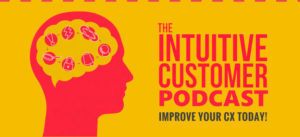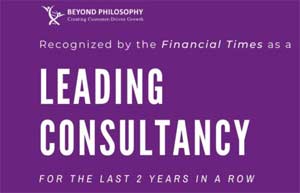I am routinely gobsmacked by the number of organizations that don’t measure customer emotions. Those that do often don’t think about how they will use the information they measure. The classic phrase, “If you can’t measure it, you can’t manage it” applies. To measure something like customer emotions in your Customer Experience, you need the proper tools.
I spend a lot of time thinking about measurement tools. We talked about measurement tools in a recent podcast, and how you can employ them in your Customer Experience. Let’s take a look at a few different ways you can get feedback on customer emotions.
However, before we get into the types and specifics of the measurement tools, I have some advice. Before you do any research, consider how you’re going to use it afterward.
This lesson I learned when I was working at my last corporate gig at British Telecom. I went to a presentation about the results of our research concerning customer satisfaction with some of our key products and services.
I was taken by the fact the person presenting was presenting it as if to say, “I don’t know why I bother in presenting this to you.” I stopped her and asked her why.
She said, “This is the third year you’ve employed us to do this research. And every year we come back and tell you the same results. And every year you do nothing about it. Why do you bother?”
She was right. We didn’t.
It was a cultural issue. We had the measurement, and we did the research, but we didn’t do anything with it. I don’t know that we had any idea what we would do with it, either.
What I wish I would have known then is that research is vital to moving your Customer Experience to the next level. Specifically, you need to know how your Customer Experience makes people feel. Measuring customer emotions in real time is an essential part of your Customer Experience strategy.
The Tools
There are different ways of measuring customer emotions, and each tool has advantages and disadvantages. Some are a bit old-fashioned and were probably effective in the past but not necessarily good moving into the future. Some others are fairly new-fangled and might seem intimidating.
Tool #1: Surveys
Surveys are an oldie-but-a-goodie. Marketing Research circles rely on survey methodology by asking people to rate on a scale or asking people to select an option.
The Advantages: The advantages are it is straightforward. Most people can write a decent survey question that is clear and unbiased. Also, surveys are not technically sophisticated, and they are affordable. Online software helps you implement these surveys, e.g., Survey Monkey and Qualtrics. Moreover, there is a lot of history with surveys. A lot of important discoveries were made with surveys. Having competency in them is a valuable skill.
The Disadvantages: My problem with surveys is you are asking about something that has happened. Sometimes clients ask us when they should do a survey. Well, there’s no point in asking how a customer was feeling about an experience they had with you six months ago because they are not going to remember. How we remember it is sometimes different from how we experienced it. You have to recognize that you’re getting a biased output and plan accordingly.
Tool #2: Ethnographers
Ethnographers are a popular method for measuring customer emotions and are also a tried and true method for customer behavior research. Ethnographers describe when organizations observe customers and gain insights by watching them in action or even by participating as a customer, like a secret-shopper program. The term comes from anthropology where you go and live with villagers in the jungle for ten years and study them by participating in their culture.
The Advantages: With ethnography, you get real-time information by observing people, an unfiltered view. With surveys, people think back on their own experiences, and they get biases. As an observer, you might also bring biases, but at least they are not the same set of biases. You also see the subconscious signals that an organization is giving their customers and how customers react by watching their body language and facial expression. Another advantage is that the evidence you gather during an Ethnographer is persuasive to the people that are implementing the experience.
The Disadvantages: Ethnographers are messy and hard to deal with. In our Customer Mirrors, an Ethnographer method we promote with our Customer Experience consultancy, we develop spreadsheets and attempt to codify the insights we get, i.e., our observations that we write down and quantify. They’re very expensive in terms of time. Also, qualitative data can be difficult to aggregate.
Tool #3: Facial Recognition
Moving into more cutting-edge measurement techniques is facial recognition. It is a biological and physiological measurement technique that analyzes people’s faces to determine their feelings in a given situation. Many people are familiar with facial recognition with their iPhone X; i.e., your face is your password. Using the same type of technology, you can identify how a customer is feeling in real time.
Advantages: It is different than surveys in that it happens in real time, where a survey reflects back on a situation. It can also be more accurate than what customers tell you. Also, unlike observation, which is subject to our human frailties, facial recognition doesn’t miss a thing. It can detect the facial or optical twitch of surprise from the most stoic customers. It has improved in speed and cost, as well, which makes it more accessible for organizations.
Disadvantages: It might not be appropriate for the questions you need to be answered about your experience. Also, technically speaking, you have to ensure the camera is positioned correctly to capture the data. Plus, don’t forget about privacy concerns. It isn’t a win to get all this great insight about your customers but creep them out!
My Advice for Customer Emotions Research
I recommend the following for your customer emotions research. First, look at what you want to know and measure. Then, compare the tools to choose the best possible way to capture and measure that data.
As you can see, each of these tools has advantages and disadvantages. However, that does not mean one tool is the best.
I get frustrated when I hear people dismissing tools as outdated, useless, or biased. To be fair, however, I am equally frustrated by people who get enamored of the shiny new toys. There’s nothing wrong with survey methods for specific purposes. The fact that they’ve been around for forever is some evidence that they’re useful or have been helpful. It’s also not the case though that they’re the right method for everything.
I’ve heard of companies saying, “Oh, well. We are forever abandoning survey research. We’re going to be looking at brain scans because that’s the true way of getting insights.” Brain scans are fantastic for answering certain types of questions, but not all of them (and don’t get me started about practicality). Surveys can also work, but not for everything, and are far more practical.
It’s not choosing one tool over the other two. Instead, it’s about putting a suite of these measurement tools together. Having a combination of methods that get the answers you need is the best way to approach the measurement of customer emotions.
My last piece of advice is to try out the tools sooner rather than later. You want accurate data, and there is a learning curve to the tools. The sooner you start working with these tools, the better data you are going to get.
Emotions have an enormous influence on Customer Experience outcomes, for good or ill. Therefore, measuring customer emotions in real time is essential for your research, so you know how your present experience is performing, and, more importantly, how it isn’t.

To hear more about The Tools to Use to Create Actionable Measures in more detail, listen to the complete podcast here.
If you want to benchmark your organization’s performance in the new world of behavioral economics against other companies, take our short questionnaire. Once you submit, we compare your answers against what we know about the market and send you a free personalized report about where your organization is today.
 Colin Shaw is the founder and CEO of Beyond Philosophy, one of the world’s leading Customer experience consultancy & training organizations. Colin is an international author of six bestselling books and an engaging keynote speaker.
Colin Shaw is the founder and CEO of Beyond Philosophy, one of the world’s leading Customer experience consultancy & training organizations. Colin is an international author of six bestselling books and an engaging keynote speaker.
Follow Colin Shaw on Twitter @ColinShaw_CX


